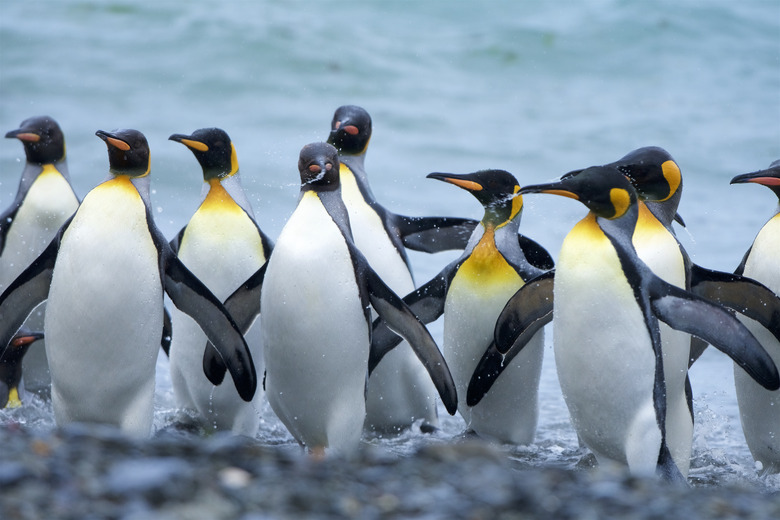How Do Penguins Move?
Penguins are most comfortable and most graceful when moving in the water, either by swimming or diving. However, sometimes they need to travel by land to find a nesting area, their colony members or to escape a predator. The average speed of penguins walking on land varies by species, but it can range from 1 mph to 2.5 mph. Compared to other animals of about the same size, penguins use twice as much energy to walk. A penguin's walk is more like a waddle, but this back-and-forth motion is actually an efficient use of energy for the penguin.
Penguins have strong, but short legs. Their big feet are webbed to help with swimming, and they also have claws that are useful for hanging onto icy surfaces. Scientists theorize that the combination of short legs and big feet makes waddling more effective than walking, since it helps elevate the penguin's center of mass, minimizes the loss of heat and uses less overall energy. Ultimately, the penguin's feet and legs are adapted more for swimming and diving in the sea, which is where they spend most of their time.
Although penguins can stand up and walk upright, they are quite slow on land. Some smaller penguin species, like the Rockhopper, actually hop instead of walking to reach their nests on cliffs. On very jagged cliffs, penguins can use their beaks like a rock climber's ice pick, to gain more stable footing. These Rockhopper penguins are also famous for jumping in feet first instead of diving like most other penguins.
On less steep hills, some species of penguins, especially the Emperor penguins or Adelie penguins who live in Antarctica, are famous for tobogganing. They slide on their tummies, using their flippers for guidance and their legs for propulsion. However, the penguins need the right type of conditions to toboggan. The ideal conditions are soft snow, so the penguin will sink slightly. These Antarctica penguins can also use floating pieces of ice as a form of transport. They must be careful, though because sometimes a piece of ice they use as footing may melt or disappear with the tide. Penguins must be wary near patches of thin or open ice. Predators like leopard seals, who would prefer to ambush them on land. They try to stay in a big group, since stragglers maybe more likely to get attacked.
Cite This Article
MLA
Mangaly, Jennifer. "How Do Penguins Move?" sciencing.com, https://www.sciencing.com/penguins-move-4567706/. 22 November 2019.
APA
Mangaly, Jennifer. (2019, November 22). How Do Penguins Move?. sciencing.com. Retrieved from https://www.sciencing.com/penguins-move-4567706/
Chicago
Mangaly, Jennifer. How Do Penguins Move? last modified March 24, 2022. https://www.sciencing.com/penguins-move-4567706/
